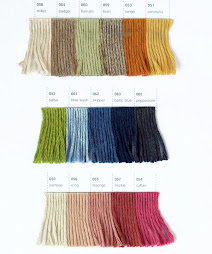 Carded cotton is cotton which has been prepared for spinning into thread or yarn. Carding is an important step in the processing of many textiles, ensuring that debris is removed while aligning the fibers to make them easier to spin. Without carding, cotton thread would be coarse and extremely fragile.
Carded cotton is cotton which has been prepared for spinning into thread or yarn. Carding is an important step in the processing of many textiles, ensuring that debris is removed while aligning the fibers to make them easier to spin. Without carding, cotton thread would be coarse and extremely fragile.Hand-carded cotton is prepared with the use of hand carders, which look sort of like the fine-toothed brushes used to smooth animal coats. Cotton is strung out across one brush, and then the other brush is gently run over the first, pulling the fibers into chunks which are aligned in the same direction, while also removing very short fibers, vegetable material, and other impurities which could have a negative impact on the thread or wool spun from the cotton.
When the carding process is finished, all of the cotton will have been transferred to the second brush, at which point it can be divided into clumps and spun. Depending on how the fiber is treated before spinning, it may turn into a sliver, a simple chunk of material, or a roving, a sliver which has been twisted for extra tensile strength. For extra-fine cotton, people may use a cotton comb to pull out additional short fibers after carding, ensuring that the cotton fibers are all the same length. Combed cotton is extremely soft and silky to the touch, and it tends to be more expensive, because a higher volume of cotton is removed during processing.
Industrially carded cotton is prepared on large spinning drums which are capable of processing high volumes of cotton at once. For rapid processing, cotton spinning machines are usually located close to the carding area, ensuring that minimal time is wasted transferring cotton products around a factory.
It is possible to buy loose carded cotton, for people who wish to spin cotton at home, and carded cotton is also used to make products like cotton balls. The advantage to using your own raw carded cotton is that crafters can control the dye lot, thickness, and strength of the resulting thread for their own projects.






